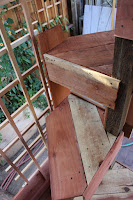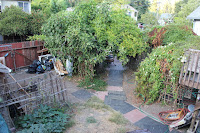Posted: 06 Sep 2019
03:28 PM PDT
I've
written in many places about one of the key shifts in librarianship. We are
moving from being library-centric to being community-centric. This movement is
based on two core ideas: first, that libraries will perform better when they
understand the environment in which they operate; and second, that true
advocacy is about solving problems together, about helping to build an agenda
for the community, then helping to get it done. Libraries that make their
communities stronger get stronger support from the community.
So how
can directors systematically inform themselves about community players and
issues in the first year, especially in a new town? (Assistant Directors moving
up within the same organization might have a handle on this, or might not.)
I propose
a method that can be personal or institutional. Either approach begins the same
way: work up a list of community movers and shakers. Who are the
influencers in your community? When you're still new to a place, finding that
information may seem hard. But a simple exercise, conducted once with
staff, once with the board, quickly generates 40-50 names. The exercise is
this: as you think about these broad areas of the community, who makes a
difference? The categories are in alphabetical order.
§ Business. Who are the main
employers, or activists within the business community?
§ Civic. Every community has civic
groups like Rotary, Optimists, or the Lions.
§ Education. Who are the prominent
leaders--principals, superintendents, communication directors--in the
community?
§ Elected. Who are the key elected
officials?
§ Faith-based. Who are the leaders of
some of the larger or influential churches, synogogues, mosques, or other
houses of worship?
§ Government. Who are the non-elected,
or appointed officials who get things done?
§ Media. Some of my most
enlightening interviews have been with people who do interviews.
§ Non-profit. There are many, many
not-for-profit groups, often with deep expertise about various issues.
The second step is to interview
them. If done on a personal basis, call them up, at least one a week,
with maybe two weeks off in a year. That's at least 50 people a year. Schedule
two a week and you can meet 50 people in six months. Introduce yourself and say
that you're the new director, and would like to pick their brains about
community issues. I recommend having that discussion either in their office, or
on neutral ground, like a restaurant. Some directors bring lunch-for-two with
them to the interviewee's office. (If being done on an institutional
basis, I recommend sending two reference librarians out to conduct an in-depth
reference interview at the person's place of business. Obviously, this is more
formal.)
What do
you talk about with them? These three questions, with probing, will easily get
you through an hour lunch:
1.
As you think about your constituencies (and getting clarity about
those constituencies is part of the probing), what issues do you think they
will be most concerned about over the next 18-24 months?
2.
What decisions do you think your constituents need to make over
the next 18-24 months, and what do you wish you knew before those decisions?
3.
Who else should I talk to?
The third
step: Make notes. If done on a personal basis, I think it's
enough to keep the information in your contact database. What is their contact
information (preferred name, email, phone, full titles, etc.)? When did
you meet with them (and who paid after you pay the first time)? What did they
tell you about their family, or hobbies? What were their answers to your
interview? What immediate upcoming project are they working on (that maybe you
need to track)? I also recommend calling this out on your calendar:
"community interviews (or CI or whatever tag that makes sense to you),
with the person's name. Together, contacts and calendar can provide a
searchable record of the process.
If done
on an institutional basis--as the beginning of a planning process, for
instance--this note-taking should take place on a more formal, shared, internal
tool: a relational database, a blog, a series of staff debriefs.
Fourth
and finally, stay in touch. Depending on the other demands on your
time, it's probably wise to book a follow-up meeting, no more than six months
from the first, and preferably quarterly. This gives you a chance to report
back on your own progress, and to ask follow-up questions. Staying in touch
might also be noticing community news that matters to that person. For
instance, an interviewee might mention an upcoming fundraiser; after seeing
that the event was successful, the director might send a congratulatory email
or phone call.
This
staying in touch not only keeps you out of the bubble (where you only hear what
you already know or believe), it might also lay the groundwork for lifelong
friendships.
Taken
together, this approach for the first year director accomplishes three
purposes:
1.
It builds relationships with the powerful. You will know their
name and interests. They will know yours. (Be prepared to share, succinctly,
your own personal information and institutional issues. But this is more about
listening than talking.)
2.
It orients you to community issues. Most people do not seek
that, and even more rarely, do so systematically. Be forewarned: If you
thoughtfully interview 50 movers and shakers, you're liable to become one.
3.
It lays the ground work for significant institutional
contributions to the community. There is both an opportunity and a threat here.
The opportunity is that you just might find an issue that the library can
significantly assist with. The threat is that you might find so many that it's
overwhelming. Then the task, institutionally, is to pick a project that not
only really helps the community, but deeply aligns with library values,
direction, and expertise.
The
bottom line is this: public library directors cannot be successful if they
don't know their communities. And building a network of contacts and supporters
is a shrewd investment of time that might be useful in many circumstances
(funding crises, intellectual freedom challenges, or simply identifying
potential partners ).
 February and March, 2020, promise some interesting one-act plays at the Guerneville Library.
February and March, 2020, promise some interesting one-act plays at the Guerneville Library. March opens with "Hipster Hobos" possibly set at Coffee Bazaar; "The Christmas Truce" is a reminder that most common people are innately good, even though their leaders may not be; we then have a special featured reading from local poet, Sashana Kane Proctor; and we close with, "Three Skeleton Key", which is pure suspense.
March opens with "Hipster Hobos" possibly set at Coffee Bazaar; "The Christmas Truce" is a reminder that most common people are innately good, even though their leaders may not be; we then have a special featured reading from local poet, Sashana Kane Proctor; and we close with, "Three Skeleton Key", which is pure suspense.

















